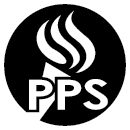PPS Equity Lens
-

(Updated October 2025)
To view the full contents of this page in a printable PDF, scroll to bottom:
-
Introduction
The goal is for everyone at Portland Public Schools to regularly apply the updated RESJ Lens. All employees will continue to practice utilizing the critical thinking and evaluation skills developed while using the lens as part of PPS’s commitment to racial equity and social justice. We believe this practice will continue to inform our organizational development and strengthen our collective impact. The result of creating an organizational culture where the RESJ lens is regularly utilized and the results are analyzed will focus everyone on achieving measurable outcomes addressing our internal barriers and practices.
-
PPS Equity Lens
The PPS Equity Lens is a critical thinking tool which encourages educators and building leaders to evaluate decision-making at all levels, including: practices, programs, and policies. Through consistent utilization of the Equity Lens, we intend to strengthen our strategies and approaches to disrupting systemic oppression and advance the district's continuous improvement and equity goals.
The following questions are a guide and should be considered in your teaming structures when making decisions and creating access for historically underserved students.
1. Start with the issue or proposed decision. What descriptive and relevant details should be included in your framing? How does it connect to PPS's mission to provide rigorous, high-quality academic learning experiences that are inclusive, and joyful. PPS holds a commitment to disrupting racial inequities to create vibrant environments for all students to thrive.
2. Identifying Barriers. Research the impact of your issue or decision. How does this decision disrupt barriers and/or perpetuate inequities for historically underserved communities?
a. How does this decision disrupt barriers in the short and long term?
b. How might it worsen inequities or create unintended consequences for historically underserved people?
3. Data Informed Decisions. Utilized disaggregated data to analyze the bounds and barriers of your problem. Is there missing historical or present context that impacts your stakeholders?
a. Referencing the disaggregated, intersectional data for focal students, what historical context, systemic inequities, or barriers are important to consider who is being most impacted?
4. Intentional Stakeholder Engagement. Intentionally engage with feedback and analysis. How can we partner with students, families and educators to gather multiple perspectives?
a. How are you ensuring historically underserved students, families, and educators most impacted by the decision have access and power in the decision-making process?
b. Which intersectional focal student identities have not been considered so far?
5. Equity, Accountability, and Sustainability. Identify how resources are prioritized, and allocate those resources to the most directly impacted. How can you monitor progress for continous access and improvement?
a. What resources (materials, personnel, money) can be leveraged to prioritize historically underserved populations?
b. What is the plan for implementation, progress monitoring, and continuous improvement within your SCIP (School Continuous Improvement Plan) goals?


